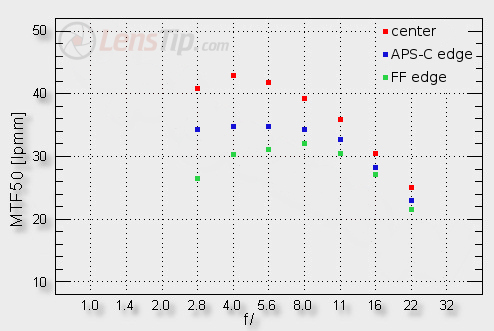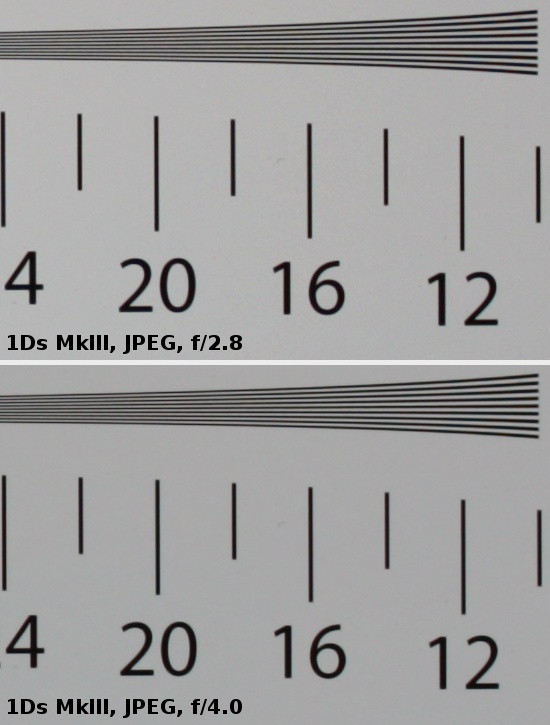Canon EF 28 mm f/2.8 IS USM
4. Image resolution
Let’s glance at a graph below to assess how the tested lens fares in the frame centre, on the edge of the APS-C sensor and on the edge of full frame.

Please Support UsIf you enjoy our reviews and articles, and you want us to continue our work please, support our website by donating through PayPal. The funds are going to be used for paying our editorial team, renting servers, and equipping our testing studio; only that way we will be able to continue providing you interesting content for free. |
- - - - - - - - - - - - - - - - - - - - - - - - - - - - - - - - - - - - - - - - - - - - - - - -
We don’t have any reservations concerning the results in the frame centre. It is true that, near the maximum relative aperture, the lens gets values 1-2 lpmm worse than the 2.8/24 model we tested not so long ago but still its performance is very good. The result of over 40 lpmm reached at the maximum relative aperture is especially praiseworthy. However if you compare the resolution values of the Canon 2.8/28 IS with those of the older 1.8/28 model they are hardly so impressing anymore. The older device was weak at the maximum relative aperture but on stopping down it performed very well so its best results are higher than those of the new construction.
Looking how the lens fares on the edge of the frame you can notice what you gain, compared to the 24 mm instrument (and also compared to the older 1.8/28 which was really very weak on the edge of the frame). Small resolution loss in the centre is recompensed by noticeably better results on the edge of both types of detectors. It’s worth reminding here that the 2.8/24 device had to be stopped down to f/5.6 to provide a decent image quality on the edge of full frame. Here it’s enough to stop down to f/4.0.
The crops below present the performance in the frame centre. They were taken from JPEG files (with the lowest sharpening level) saved along RAW files, used for the analysis above.
 |






